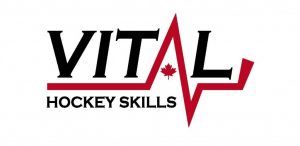22 Nov The Royal Road: Where to draw the line
 As a hockey coach it is easy to become obsessed with getting shots on net during a game. It would seem logical that the more shots you get, the higher your chances are that one of those pucks will cross the goal line. More shots means more goals and more goals will hopefully translate into more wins. But all simple logic aside, hockey coaches need to get their teams more in tune with the shot quality, than quantity. Replace “Let’s get pucks to the net” with “Let’s get pucks to the net only when they have a high percentage of going in”.
As a hockey coach it is easy to become obsessed with getting shots on net during a game. It would seem logical that the more shots you get, the higher your chances are that one of those pucks will cross the goal line. More shots means more goals and more goals will hopefully translate into more wins. But all simple logic aside, hockey coaches need to get their teams more in tune with the shot quality, than quantity. Replace “Let’s get pucks to the net” with “Let’s get pucks to the net only when they have a high percentage of going in”.
Studies have shown that there is an imaginary lane way down the middle of the zone, that raises the probability of scoring greatly when a puck crosses it it prior to a shot. This lane way has been coined The Royal Road.
Ex New York Ranger Goalie and msg.com Rangers Hockey Analyst Stephen Valiquette has come to recognize an increase in successful conversion of scoring opportunities into goals when a goalie is forced to move and track a puck that crosses the Royal Road. This is mainly because goalies are forced to switch from a short shuffle to square up to a shot and use a more powerful T-Push. He goes on to state that “because goalies have limitations to their movements and while laterally tracking they are forced to open up”.
The most effective offensive principle is to move pucks across the Royal Road whenever possible. Any pass that crosses the imaginary grid line below the tops of the circles that ends up hitting the net, has a higher probability of going in. It’s a notable difference of 22% successful goals on pucks that cross it, versus only 9% of shots from the sames side of the Royal Road. It is also interesting to note that a player who carries the puck across the royal road (without passing) has a 33% chance of scoring, compared to a 3% chance of staying wide according to a blog on the Royal Road topic by Chris Boyle.
Looking at all this a coach needs to gear their teachings toward possession and composure, and away from the age old “Pass off the pillow” rhetoric. Heads up hockey, shifty footwork and deceptive skills to teach players how to exploit space and time with and without the puck. Mix that with a little bit of eye contact and passing with intent and let the magic happen across the Royal Road!




Sorry, the comment form is closed at this time.